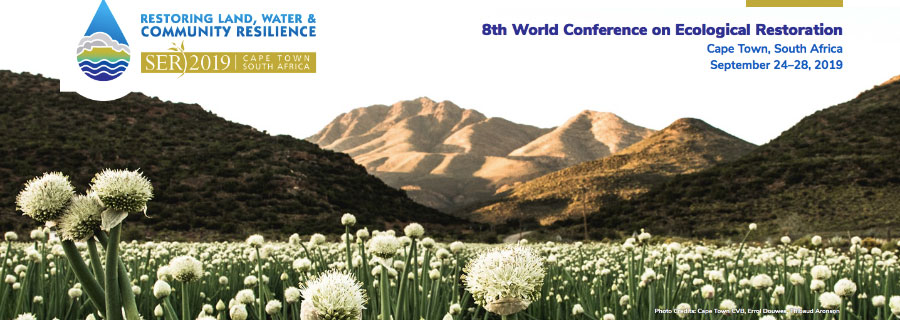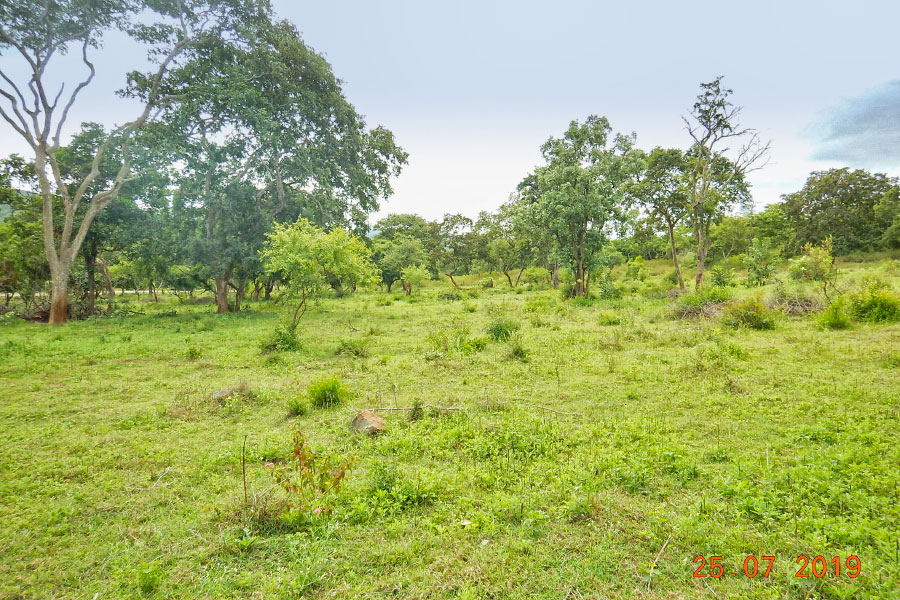This was the constant undertone at the 8th Global Ecological Restoration Conference of the Society for Ecological Restoration (SER) held recently at Cape Town, South Africa. Almost a third of the world’s natural resources are degraded today, many severely, and India is no exception. This includes our forest and non-forest landscapes, oceans, rivers, coasts, wetlands, and many other unique ecosystems. Biodiversity as well as ecosystem service delivery capability stand more seriously impaired than ever before. Importantly, many of nature’s systems are damaged beyond unassisted recovery. There is an urgent need to restore responsibly.
Flagship event
The global restoration conference is the flagship biennial event of SER. It is noteworthy that the last two global conferences have been held in the tropics. The Cape Town conference had over 800 participants from 68 countries, which included practitioners, researchers, policy-makers and students. The meeting of minds of different restoration disciplines and contexts from across the world enriched the conference. Asia had a strong presence with representatives from diverse locations like China, India, Nepal, Mongolia, Kuwait, Jordan, Iraq, Kyrgyzstan, Indonesia, etc.

The global restoration conference is the flagship biennial event of SER.
Wide array of topics
The theme of the conference was “restoring land, water and community resilience”. In addition to traditional topics like seed science and practice, management of invasive species, restoration of mining areas, etc. the conference covered new areas like restoration of marine ecosystems and designing restoration projects for rewilding by keystone faunal species. Role of restoration in ensuring water security occupied center stage. A major focus of the conference was on topics like scaling up of restoration efforts to meet international targets, State-level policy interventions, community engagement and climate change.
International standards for the practice of ecological restoration
A highlight of the conference was the release of the second edition of the international standards for the practice of ecological restoration. The standards provide the principles and guidelines for planning, implementing and monitoring restoration projects and have universal application across ecosystems and regions. The standards are aimed at bringing greater consistency and process-orientation in the way restoration projects are run.
A discipline that has come of age
Ecological restoration is a relatively young discipline in the arena of conservation. Significant strides have been made in both the science and practice of restoration over the last three decades. The recent UN declaration of the next decade as the ‘Decade of Ecological Restoration’ gives a much needed fillip for the restoration community. Emerging evidence that biodiverse ecosystems are far more effective in both providing ecosystem services and combating climate change emphasize the importance of scientific and well-managed ecological restoration as compared to practices like afforestation. There is increasing realization that restoring an ecosystem is more than planting trees and involves a holistic approach aimed at rebuilding resilience by addressing abiotic and biotic factors. And also an acknowledgement that scientific and traditional ecological knowledge can complement each other in enhancing restoration efficacy.
The move towards scale
The move towards large scale and landscape-level restoration projects has been a strategic shift across the world over the last few years. This has been encouraged by global conventions like the Bonn Challenge. In many regions like North and South America, Australia and parts of Africa, the Government agencies have embarked on many large-scale projects underpinned by sound restoration principles. Projects of many non-Governmental agencies also run into thousands of hectares, often discrete sites linked together at the landscape level. This shift brings along with it many challenges, prominent of which are restoration capacity-building, funding, policy interventions and most of all, ensuring restoration integrity.
The Indian context
The context of scale is very relevant to India too. To cite a simple example, over 50% of protected areas in the Nilgiri Biosphere are invaded by alien plant species, severely impairing biodiversity and availability of fodder for herbivores. And accentuating human-wildlife conflict. Dry and moist deciduous forests have been degraded by species like Lantana camara, Chromolaena odorata and Parthenium hysterophorus. New threats like Senna spectabilis are expanding aggressively. Shola-grassland ecosystems in the upper Nilgiris that form crucial watersheds have been impacted by species like Acacia mearnsii (Black Wattle) amongst others. At a back of the envelope calculation, this means over 2500 sq kms of degraded area in NBR alone. If we extrapolate this to the whole country, and include other ecosystems like mangroves, wetlands, estuaries, rivers, etc. one can get an idea of the enormity of the issue. This would need restoration action at a very large scale for the next thirty to forty years. This needs vision backed by resources, and a large number of trained restorers on the ground. If implemented well, this could significantly increase the carrying capacity of our ecosystems for wildlife, and counter to a considerable extent the challenge we face of habitat loss.
Restoration ecology and conservation biology
The main focus of conservation in India till now has been on saving threatened faunal species. This has in general meant focus on legal and physical protection of forests and wildlife. However, of late there is an increasing realization that degradation of our natural ecosystems is posing a major threat to species’ survival. This is where ecological restoration complements traditional conservation, by creating healthier habitats for wildlife. As a holistic discipline that focuses on revival of biodiversity as a whole, restoration helps build resilient and sustainable conditions for diverse fauna to survive and thrive. In more ways than one, these two disciplines are two sides of the same coin. While there is significant scope for collaboration, this will need facilitating better understanding of the science and practice of ecological restoration amongst various stakeholders. This is a key role that restorers have to play.
To reiterate, many of our ecosystems are degraded beyond self-recovery. Therefore conservation is not enough, we need to restore responsibly.


 CI is a non-profit, non-commercial portal that aims to facilitate wildlife and nature conservation by providing reliable information and the tools needed to campaign effectively.
CI is a non-profit, non-commercial portal that aims to facilitate wildlife and nature conservation by providing reliable information and the tools needed to campaign effectively.


